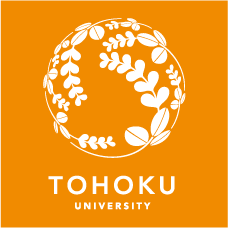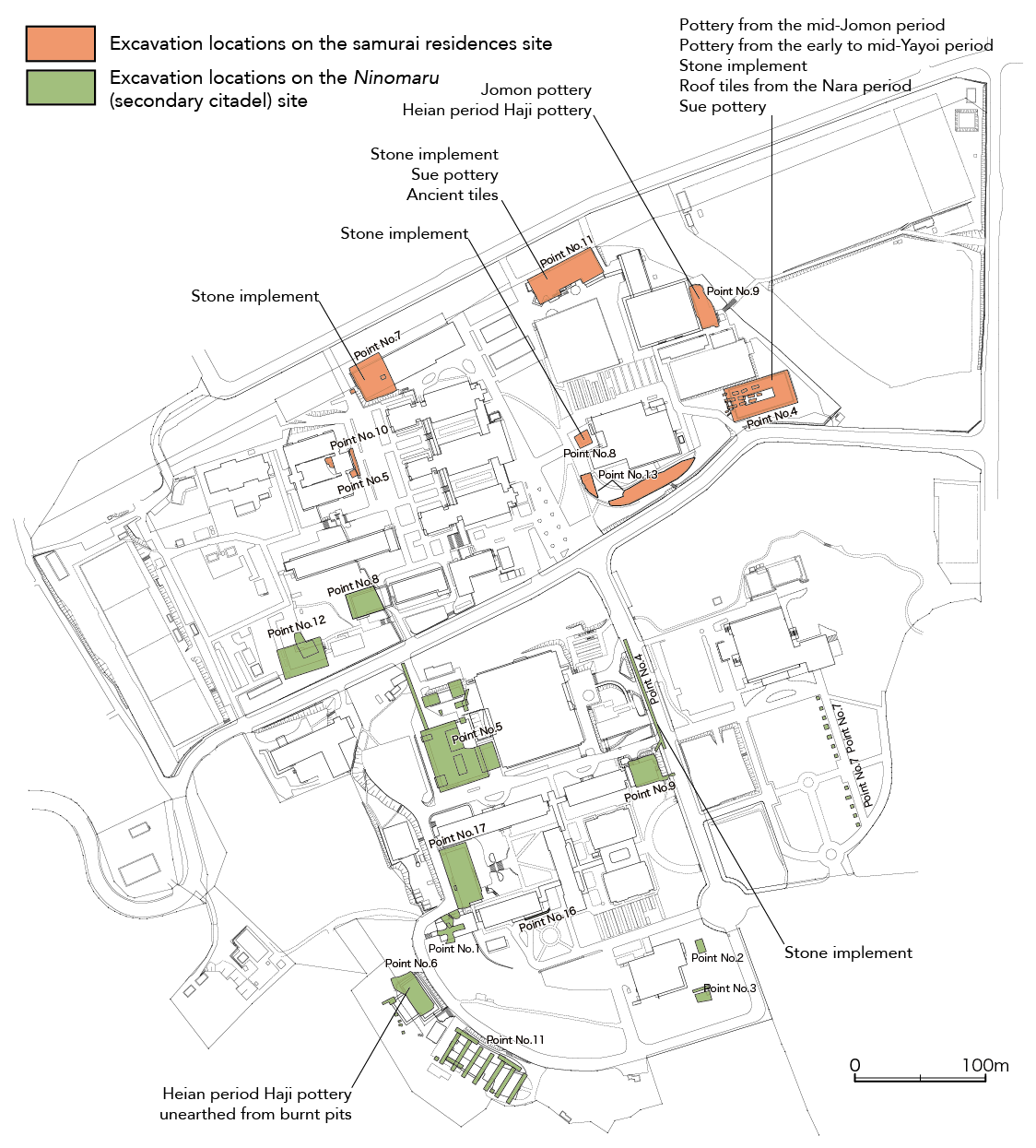Over the years, the Kawauchi Campus has undergone a variety of transformations:
In the pre-war period, it served as a maneuvering ground for the former Japanese army; and after the war, it was requisitioned for the same purpose by the US Army.
This page gives a brief history of the Kawauchi Campus.
The Kawauchi Campus in Ancient and Medieval Times
Main excavation sites and locations where ancient artifacts were discovered, up to AY 2010
(Click to enlarge the image)
Almost the entire area of Tohoku University’s Kawauchi Campus is located on the former site of Sendai Castle’s Ninomaru (secondary citadel) and the nearby samurai residences, which have been registered as ancient sites. Therefore, excavations have been carried out in conjunction with university construction work, and various artifacts have been unearthed.
Earthenware and stoneware dating to the Jomon period (14,000 BC–1,000 BC) and Yayoi period (300 BC–250 AD) have been discovered at six locations on the Kawauchi Campus. These artifacts are somewhere in the region of 5,000 and 2,000 years old. Although dwellings and other such remains have not been found, artifacts were discovered over a wide area, indicating that Kawauchi was used extensively as a living space.
In addition to this, roof tiles and earthenware from the Nara period and Heian period (between the 8th and 10th centuries), were recovered at four locations on campus. The roof tiles may have been taken from other sites and brought here during the Edo period, but the earthenware appears to have been used here in the Kawauchi area. Although remains such as dwellings have not been found, in the Botanical Gardens on the south side of Kawauchi, earthenware dating to the Heian period (794–1185) was excavated from burnt pits.
Records written in the Edo period (1603–1868) show that, in medieval times, there were temples and shrine buildings all around Aobayama, in addition to which itabi stone monuments dating to the Kamakura period (1185–1333) remain inside the Botanical Gardens. However, to date, excavations in the Kawauchi area have not brought to light any medieval remains or artifacts. This suggests that even if facilities and buildings did exist here in medieval times, they must have existed within a limited range.

Burnt pits from the Heian period discovered at Ninomaru Site 6.
Since the pits were discovered at the edge of the excavation site, they were only partly surveyed, but the excavations uncovered a Haji pottery urn dating to the Heian period.

Itabi stone monuments from the Kamakura period inside the Botanical Gardens
There are two monuments, both of which are thought to be memorials. The years 1287 and 1302 are inscribed in the stone.
Kawauchi Campus in the Edo Period:
The Ninomaru (secondary citadel) of Sendai Castle and the Samurai Residences
In the Edo period (1603–1868), the area that is now the Kawauchi-Minami Campus housed the Ninomaru (secondary citadel) of Sendai Castle, and the Kawauchi-Kita Campus area was home to a number of samurai residences.
In 1600, the first daimyō of Sendai Domain, Date Masamune, began construction of the castle’s Honmaru (inner bailey). In the days of Masamune, the buildings in the Kawauchi-Minami Campus area included residences of the highest samurai officials of the domain. The second daimyō, Date Tadamune, went on to construct the Ninomaru in the Kawauchi area in 1638. After that, while undergoing a number of changes, the Ninomaru was maintained as the effective center of Sendai Castle until the end of the Edo period.
A large number of facilities related to the Ninomaru and the nearby samurai residences in the Edo period, including building remains, ditches, moats, and wells, have been discovered, and pottery items, roof tiles, and various other artifacts unearthed.
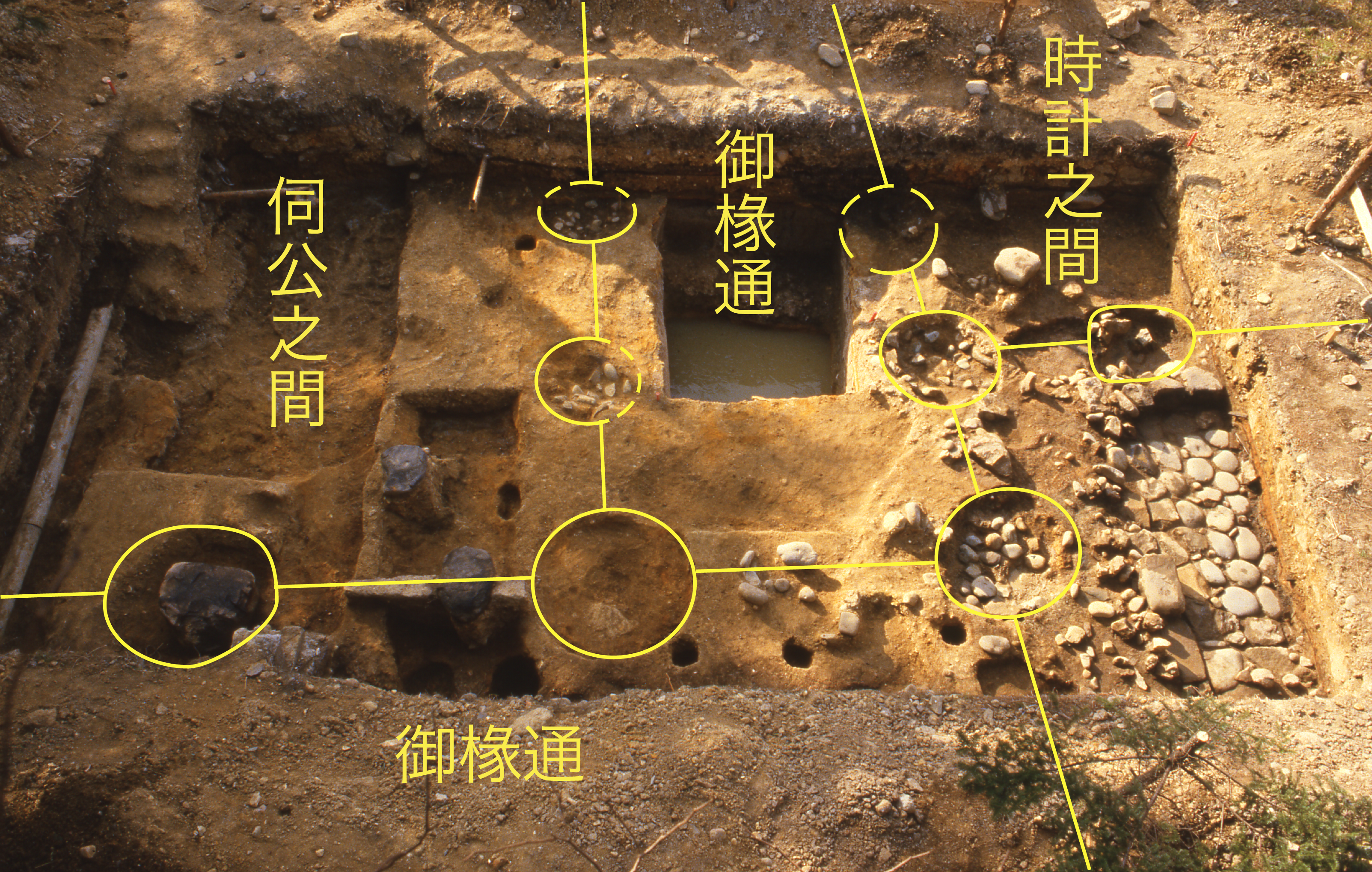
Remains of foundation stones of the Ninomaru buildings
Discovered at Ninomaru Site 2, east of the Humanities Cafeteria. Comparisons with drawings revealed that the stones were close to the central building of the Ninomaru.
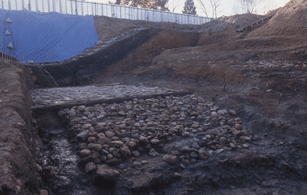
Moat on the north side of the Ninomaru
Discovered at Ninomaru Site 12, prior to construction of the Student Health Care Center. The north bank of the moat on the north side of the Ninomaru was discovered along with a stone weir that ran across the bottom of the moat.
remains of moat (north side of 'Ninomaru')
It was found at A09 Student Health Care Center.
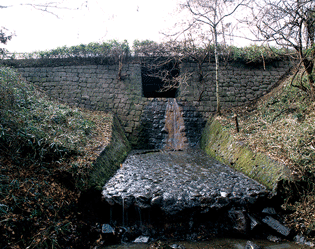
Stone wall of an earthen bridge across Senganzawa Stream
The wall can be found where the road that enters the Minami Campus from the north crosses over the stream. When the Ninomaru was constructed, the stream was cut off by the earthen bridge, and a moat was constructed. Although partially renovated, the bridge is one of the few places to offer a glimpse of the Edo period.
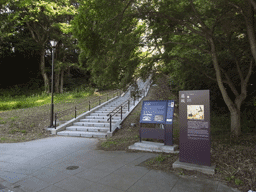
Ogizaka Slope
A slope ascended by feudal retainers to access Sendai Castle’s Ninomaru (now Tohoku University’s Kawauchi-Minami Campus). The name Ogizaka (fan path) is said to derive from the shape of the slops, which spreads out toward the bottom in a fan-like form.
To coincide with the opening of the Sendai Subway Tozai Line, the stairs were upgraded to provide a thoroughfare from International Center Station to the Kawauchi-Minami Campus and Hagi Hall.
Kawauchi Campus in Modern Times
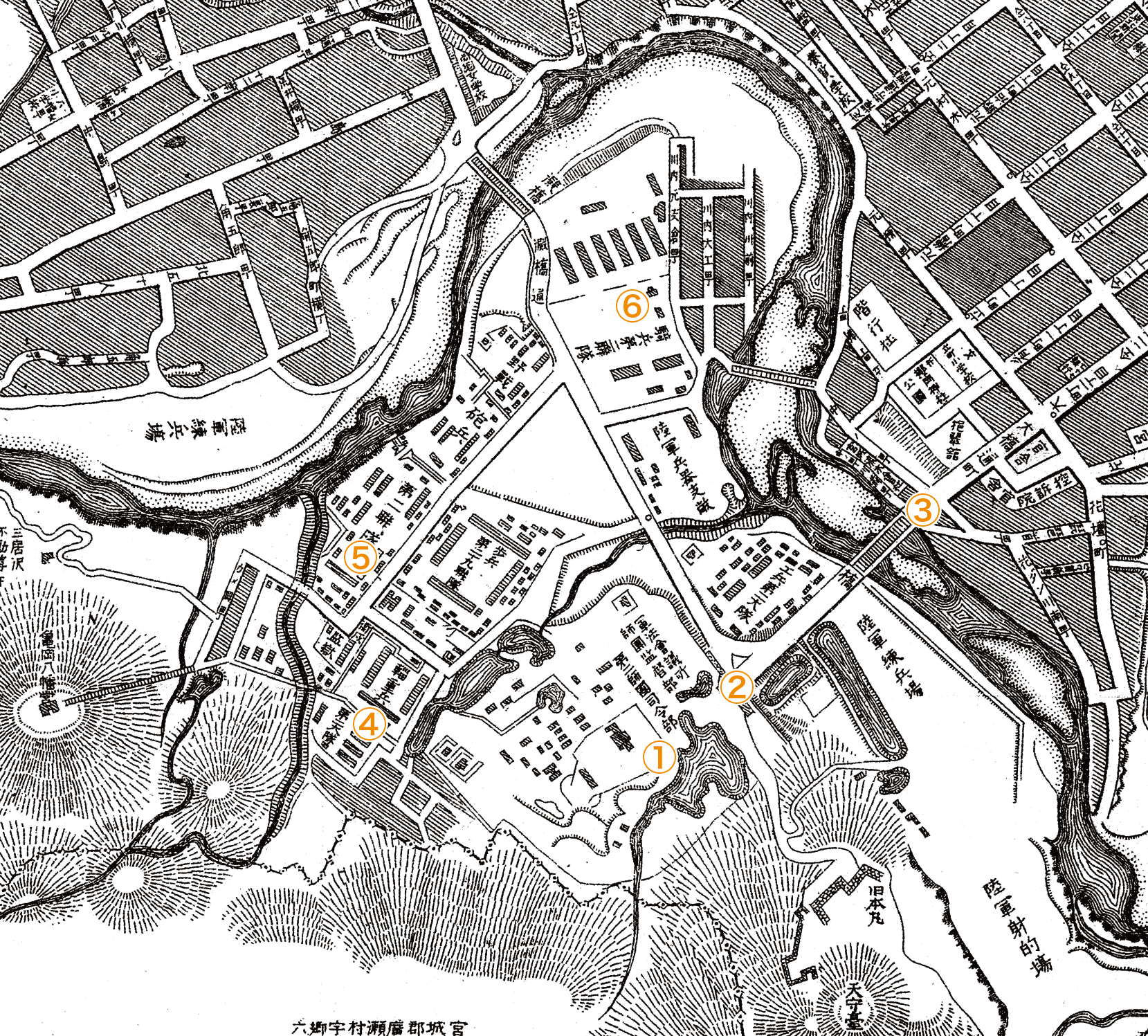
Map of the Kawauchi area in the mid-Meiji period
(Saikin Jissoku Sendai Shigai Zenzu [Complete Map of Sendai City as Recently Surveyed], 1900, issued by the Sakan Shoten bookstore, part of the “Zakke Collection”)
The numbers on the map correspond to the photos below.
After the Meiji Restoration, Sendai Castle and its surrounding area became state-owned land, and in 1888 the Second Division was formed to succeed the Sendai Garrison. Kawauchi became the nexus of the “military city” of Sendai, and a succession of military facilities was established there. The headquarters of the Second Division were located on the site where the Ninomaru once stood (now the Kawauchi-Minami Campus), which lies straight ahead after passing through the Otemon Gate from Ohashi Bridge; and infantry, transport, field-artillery, and other army corps were established in the area to the north of that (now around Kawauchi-Kita Campus). Both Ohashi Bridge and Yodomi Bridge were rebuilt as iron bridges to coincide with the development of these military installations. Although Kawauchi remained a special area closed off to the public, at the same time, these gargantuan military facilities had a considerable impact on the lives and economic conditions of the Sendai people.
However, in 1945, Kawauchi suffered catastrophic damage due to extensive aerial bombardment, during which many of the facilities, including the Otemon Gate, a remnant of Sendai Castle, burned to the ground. The site was requisitioned by the occupying forces after the war and used until 1957 as barracks for the US Army’s Camp Sendai.
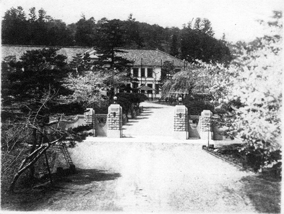
1. Headquarters of the Second Division
The building was reconstructed the year after the Headquarters of the Sendai Garrison—housed in the former castle buildings—was destroyed by fire in 1882. (Photo courtesy of Sendai City Museum of History & Folklore)
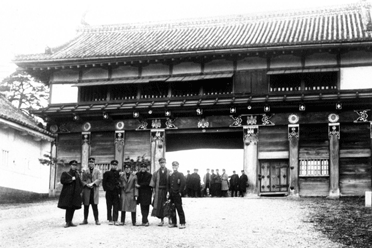
2. In front of Otemon Gate (Pre-war)
As the remnants of Sendai Castle succumbed to a succession of fires and other calamities, Otemon Gate remained intact until 1945, and was designated as a National Treasure of Japan. In the Taisho period (1912–1926), it was opened to the public to to accompany the construction of a walking path leading up to the Honmaru (inner bailey). Only the corner tower is reconstructed today.
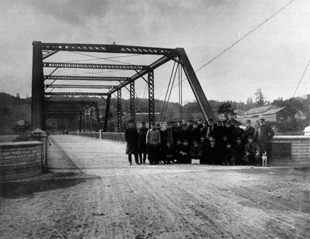
3. At Ohashi Bridge (1920s)
The bridge was reconstructed in 1892 after the old wooden bridge was swept away in a flood. The Second Division is said to have made strong demands when the bridge was rebuilt.
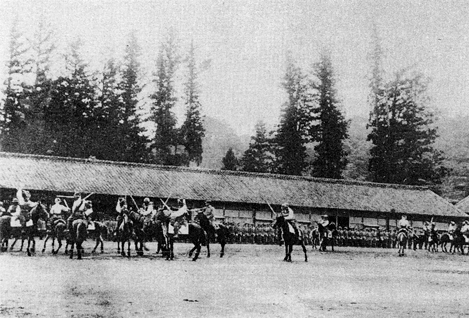
4. Second Battalion of the Transport Corps (now part of the Kawauchi-Kita Campus)
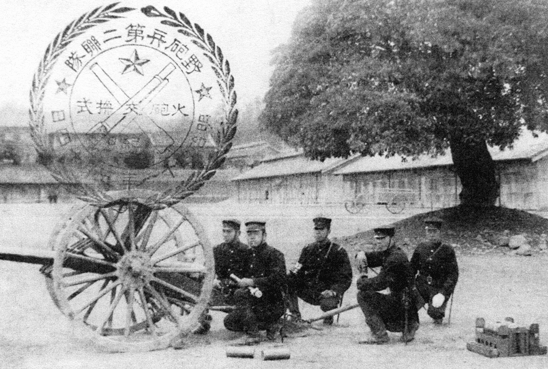
5. Second Battalion of the Artillery Corps (now the area around Kawauchi Residences)
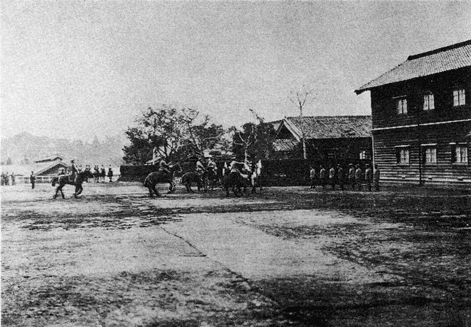
6. Cavalry Battalion (now the area around Sendai Daini High School)
Birth of the Kawauchi Campus
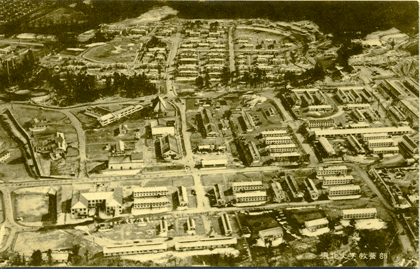
Aerial view of Kawauchi Campus, 1958, north to south
The photo shows the Kawauchi area shortly after the College of General Education was relocated here. The building in the center with a triangular roof was the Large Lecture Hall.
In November 1957, the Kawauchi and Aobayama areas, which had been used as a camp for the US Army after the war, were returned to Japan, marking a new stage in Kawauchi’s history.
Following various broad-ranging investigations and discussions on how to use this vast area of land close to central Sendai, it was decided that the area should be developed as a new culture and education zone in Sendai by three parties: Tohoku University, Miyagi Prefecture, and Sendai City. At the time, the task of integrating the various colleges of education dispersed throughout the city was a serious concern, as was the lack of space in the Katahira area, where the main campus had been located since the university was founded. Thus, the Kawauchi and Aobayama areas were critical in order to solve these issues in a single stroke.
To begin with, in 1958, two colleges (for the General Education Course) situated in the Tomizawa and Kita-Shichibancho districts of Sendai were relocated to Kawauchi. The was also the time when the Aobayama Botanical Gardens came into being. From the late-1960s, various colleges in the Katahira area also begun to be moved, followed by the relocation of the arts and sciences faculties to Kawauchi-Minami in 1972 and 1973. At the same time, a new University Library was constructed, giving shape to the Kawauchi Campus that we see today.
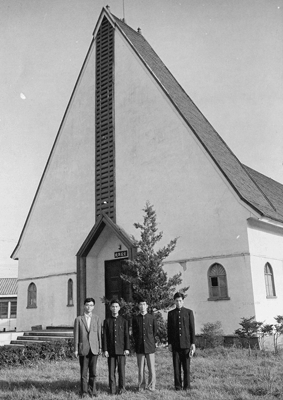
Large Lecture Hall of Kawauchi College (1962)
Housed in a chapel from the days of the US Army

Lifting of the blockade on the College of Education. Riot police use water cannons (November 23, 1969)
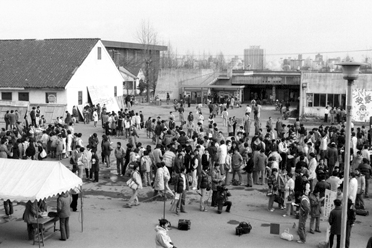
Area near to the Welfare Hall inside the College of Education (January 1982)
Day of the Standard Preliminary Entrance Examination for National Universities
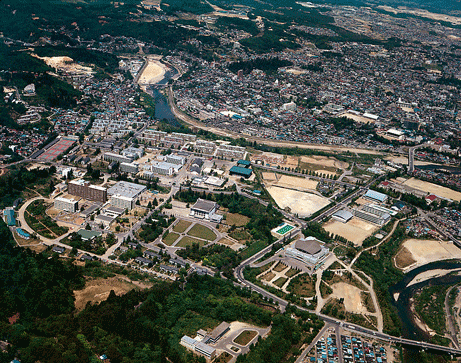
Aerial view of the Kawauchi Campus (1975), taken from the south
The history of Kawauchi Campus introduced on this page is on display at the Exhibition Gallery of Tohoku University Centennial Hall (Kawauchi Hagi Hall).
Buried Cultural Properties on the Kawauchi Campus
The Kawauchi-Minami Campus is located on the site of Sendai Castle’s Ninomaru (secondary citadel), and the north area of the campus once contained residences occupied by vassals of the feudal lord. Ongoing excavations are underway at two sites: the Ninomaru of Sendai Castle and the samurai residences located to the north of the Ninomaru. To date, 17 excavations have been carried out at the Ninomaru site, and 13 have been conducted at the site of the samurai residences.
In addition to these sites, remnants include Kawauchi B Site and the Kawauchi Stone Monuments. The Kawauchi B Site are being excavated by Sendai City Board of Education to coincide with the construction of the Tozai Line of Sendai’s rapid transport system. As a result, features such as wells and pillar holes from the 17th to 19th century were detected, and a large number of pottery items and other items are currently being unearthed.
For details, please visit the website of the Archaeological Research Office on the Campus, Tohoku University (Japanese Only).
Famous Places, Monuments, and Historic Buildings on the Kawauchi Campus
Purple:Famous place, ruins Orange:Modern building, historic building Light Green:Monument
